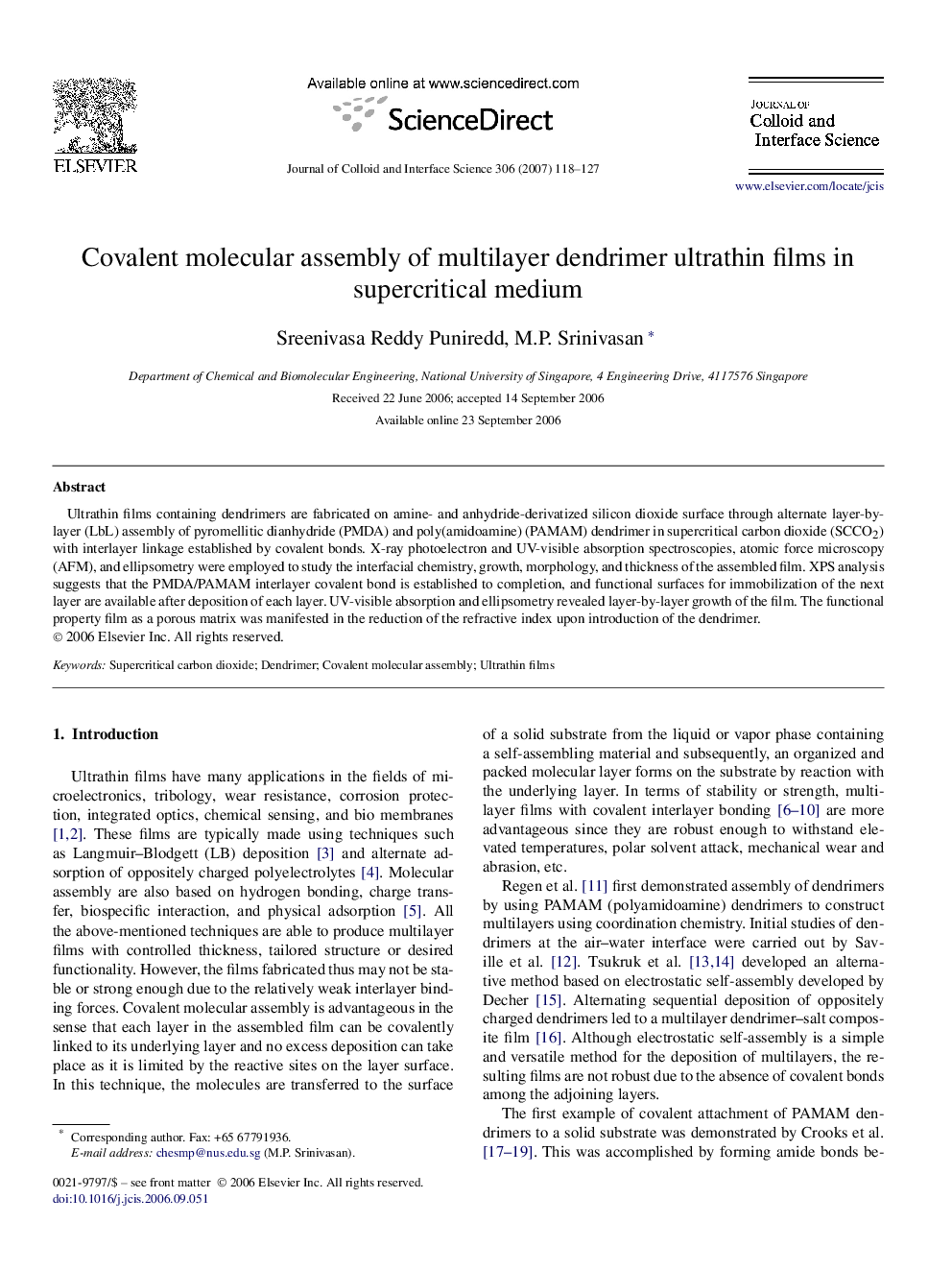| Article ID | Journal | Published Year | Pages | File Type |
|---|---|---|---|---|
| 613126 | Journal of Colloid and Interface Science | 2007 | 10 Pages |
Ultrathin films containing dendrimers are fabricated on amine- and anhydride-derivatized silicon dioxide surface through alternate layer-by-layer (LbL) assembly of pyromellitic dianhydride (PMDA) and poly(amidoamine) (PAMAM) dendrimer in supercritical carbon dioxide (SCCO2) with interlayer linkage established by covalent bonds. X-ray photoelectron and UV-visible absorption spectroscopies, atomic force microscopy (AFM), and ellipsometry were employed to study the interfacial chemistry, growth, morphology, and thickness of the assembled film. XPS analysis suggests that the PMDA/PAMAM interlayer covalent bond is established to completion, and functional surfaces for immobilization of the next layer are available after deposition of each layer. UV-visible absorption and ellipsometry revealed layer-by-layer growth of the film. The functional property film as a porous matrix was manifested in the reduction of the refractive index upon introduction of the dendrimer.
Graphical abstractSchematic of layer-by-layer molecular assembly of poly(amido amine) dendrimer on an anhydride-derivatized silicon substrate with interlayer covalent bonds, formed using supercritical carbon dioxide as the processing medium.Figure optionsDownload full-size imageDownload as PowerPoint slide
